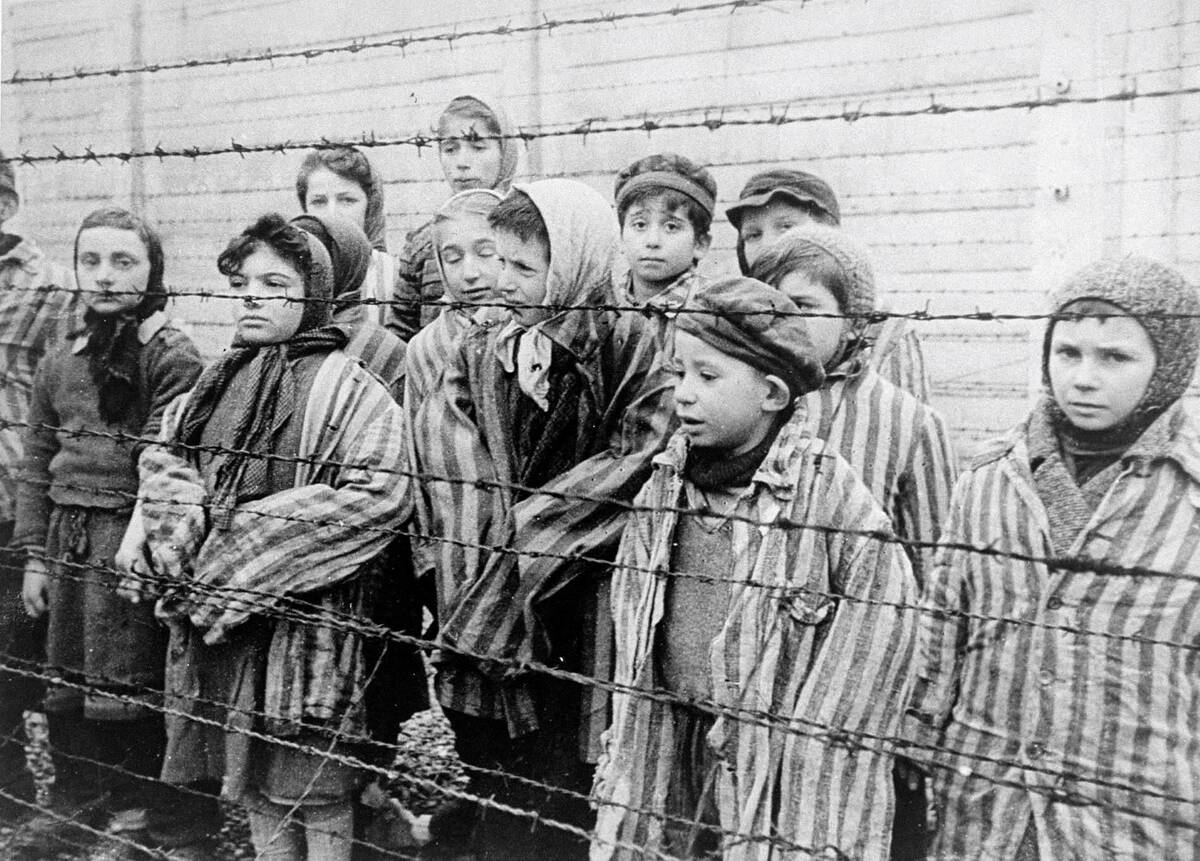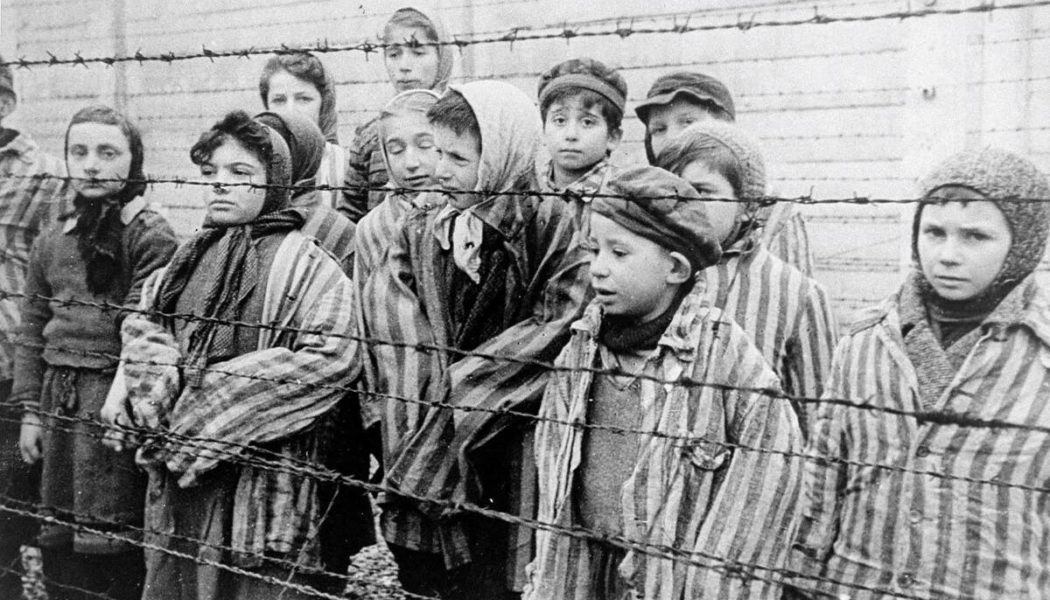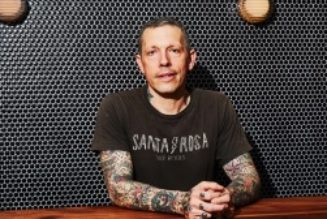
Auschwitz was hell, a nightmare of agony, grief, and despair. Except in the maternity ward. There, as the lice bit and the patients shivered and the rats skittered, there was—astonishingly—peace. There were painless births and healthy babies and mothers holding their little ones as the midwife that they all called “Mother” prayed with them and sang to them and treated them like human beings.
This peace never lasted long. The babies were taken or the mothers were sent back out to work, trying desperately to feed their babies as they and all those around them starved. But in the maternity ward there was peace. There were babies who lived and mothers who lived. And all because of Servant of God Stanisława Leszczyńska.
Born to a Polish Catholic family during a time when her part of Poland was under Russian rule, Stanisława (1896–1974) had a tumultuous childhood. Her father was forced to fight for the Russian army for five years while her mother worked twelve-hour days at a factory. The family moved to Rio de Janeiro for two years, where Stanisława attended school in Portuguese and (providentially) German but returned home when she was fourteen. There in Lodz she finished high school, then married at age twenty and began having children. Her firstborn was born months early; his survival seemed miraculous to Stanisława, who began to wonder whether she might be able to serve women and babies in similar circumstances.
Stanisława already had two children when she began midwifery school. This academic endeavor required her to leave her children behind for two years while she attended school in Warsaw—a rather shocking choice in Poland in 1920. After graduating with honors, Stanisława knelt in a church and consecrated her work as a midwife to the Blessed Mother, vowing that if ever she lost a baby she would give up midwifery.
After her return to Lodz, Stanisława began delivering babies (while herself giving birth to two more sons). The family lived in a largely Jewish neighborhood and Stanisława and the children spoke Yiddish—a talent that would come in handy in Auschwitz when Stanisława found herself serving thousands of Jewish women of various nationalities. Stanisława had many Jewish friends in addition to her Jewish patients; she even visited synagogues with regularity to pray with the congregations there and often invited rabbis to the family home for a meal and a spirited debate.
In addition to her work as a midwife, Stanisława welcomed several impoverished families (both Christian and Jewish) to rent living space in the Leszczyńska home at impossibly low prices. Her life was one of service as mother and midwife, and even more so when the Nazis invaded Poland and the Leszczyńska family began covert work to help Jewish families in their neighborhood. Stanisława and her children delivered food and false papers (forged by her husband and father-in-law) to those living in the Jewish ghetto in Lodz but were caught by the Gestapo in early 1943. Stanisława was arrested along with her three younger children (a daughter and two sons, all in their early twenties). Though Stanisława’s husband and older son evaded capture, her husband was killed in the Warsaw Uprising eighteen months later.
While her two younger sons were sent to Mauthausen-Gusen concentration camp, Stanisława and her daughter Sylwia were taken to Auschwitz. There, Stanisława risked her life by presenting herself to a guard, showing him her credentials as a midwife, and asking to serve the pregnant women of the camp. Stanisława served as the camp midwife for nearly two years, from shortly after her interment there on April 17, 1943 until her departure after the camp was liberated on January 26, 1945. During that time, she worked alone, with no other midwife to relieve her; witnesses say she seemed to go for days or even weeks without lying down. She delivered over 3,000 babies and provided care for their mothers. Despite the horrifying conditions of the camp, it seems that all of the women and children that Stanisława cared for survived the births. Even more astonishing: many of the women she cared for said they felt little to no pain in childbirth, though nearly all were entirely unmedicated.
There were no clean bandages and no medication beyond a scant handful of aspirin tablets to be rationed each day among the 1,200 women in the infirmary. Fetching clean water required a twenty-minute walk, and since only Stanisława had permission to move freely in the camp, she generally had to get it herself. Her only tools were a small pair of scissors, no bigger than cuticle scissors. The facility was beyond filthy and the women were already severely underweight. Trained as a midwife, Stanisława was often forced to provide the services of a physician as well, offering care she was not qualified to offer simply because there was no other choice. At one point during her tenure there, two female physicians were also imprisoned and Stanisława was sometimes able to call on them for help, but largely she was on her own in the face of unimaginable suffering.
Stanisława worked herself beyond the point of exhaustion out of love for her patients and her results were astonishing. She spoke of this in 1957, when delivering a speech detailing her experience:
One day the Lagerarzt [camp doctor] told me to present a report on the postpartum infections and mortality rate for the mothers and newborns. I told him that I had not had a single death of a mother or neonate. He looked at me in disbelief and said that even the best German university hospitals could not boast of such a success rate. In his eyes I could see anger and hatred.
This incredible statistic—impossible in even the best hospitals today—held throughout her time at Auschwitz; Stanisława later said, “Contrary to all expectations and in spite of the extremely inauspicious conditions, all the babies born in the concentration camp were born alive and looked healthy at birth. Nature defied hatred and extermination and stubbornly fought for her rights, drawing on an unknown reserve of vitality.” Stanisława had consecrated her career to the Blessed Mother who had, it seems, been working overtime to intercede.
There was little Stanisława could do for the babies though. She could see to their eternal life, baptizing them as soon as they were born (always with their mothers’ permission). But she knew that very few would survive the camp. She could not save them and was told to simply obey orders by killiing the little ones. Stanisława refused.
She was beaten. She refused. She was commanded by Mengele himself, the infamous “Angel of Death” who performed horrific experiments on many prisoners and directly murdered thousands more. “An order is an order!” he screamed. She refused. She was threatened with death if she did not murder the babies by throwing the Jewish ones directly into the trash. She refused.
Perhaps this is what led to her horrifying experience in August of 1943, in which she herself became a subject of Mengele’s experimentation. Stanisława was given an injection, then fell ill with spotted typhoid fever. She was observed for several days but knew the danger of appearing excessively sick, so she continued to make herself as useful as she could in the infirmary until she recovered.
But even when Mengele made it clear that he could do whatever he liked to her, Stanisława handed the babies to their mothers, giving them at least a few moments together. She would not let the inhumanity of the camp change her. Instead, she treated those mothers and those babies exactly the way she would have treated any noblewoman and her child: with dignity and love. Truly, she said that each child felt, in her arms, like the Christ child. And so, she reverenced each child as Christ and each mother as the Blessed Mother in Bethlehem.
These babies were born alive and stronger than anyone would have expected. But some 1,500 did not survive even their first day. For a long stretch of time, two prisoners (one of whom had been sent to Auschwitz as a punishment for infanticide) were tasked with drowning any Jewish babies and any others who did not look Aryan; the few hundred with blond hair and blue eyes were stolen from their mothers and sent away to be “Germanized” as the children of Nazi families. Even then, Stanisława refused to give up on those babies or their mothers. She testified that she devised a way of tattooing false birthmarks in the babies’ armpits so that their mothers might one day find them; as unlikely as such a reunion would be (contingent upon both mother and baby surviving), that possibility gave the new mothers hope even as their babies were taken from them.
With 1,500 babies drowned and a few hundred shipped away, 1,000 remained. But their mothers’ bodies were too starved to produce milk for them and no other nourishment was available. The bitter cold cut through the camp with no heating to stave it off. Typhus and dysentery raged. And so the little ones starved and froze and faded and died. Only about thirty babies survived the camp.
Nor was Stanisława’s suffering limited to watching other women fear for their children. Her own daughter Sylwia was beaten and subjected to medical experimentation. She was twice ordered to the gas chamber but Stanisława fought, knowing that she was indispensable. If her daughter was to be killed, she said, she would go to the chamber as well. But the camp needed a midwife, so mother and daughter were spared the chamber and sent back to suffer the constant agonies of life in Auschwitz. Stanisława’s stubbornness had saved her daughter’s life, as it would save so many in the months to come.
Despite the horrors that surrounded her, Stanisława continued to be a source of peace and hope in the camp, so much so that everyone in the camp began to call her “Mother”—even Dr. Mengele. She spoke calmly and kindly to all, even offering prayers or beginning to sing a hymn when her patients were overcome by terror or pain. She sang often, feeling that it was sometimes all she could do to help the women, and fit her prayers into the rhythm of her wildly overworked days. She prayed as she bustled from one bed to the next, inviting all the women in the infirmary to join in as she led them in prayers for fifteen or even thirty minutes. She prayed during each birth, begging God for the life of mother and child and thanking him afterward. Truly, however skilled she was as a midwife, her success was so astonishing that it seems it can only be attributed to a thousand different miracles.
Perhaps this is what won Mengele’s respect. Or perhaps it was her refusal to cower before him, insisting that she would never murder a child and demanding that he consider the oath he had taken as a physician to do no harm. Either way, Mengele did respect Stanisława. He teased her. Once, when he walked in on the women quietly celebrating Christmas Eve with a loaf of bread divided like the traditional Polish opłatek, he paused in the doorway and muttered that in that moment he almost felt human. Stanisława’s kindness and love were even beginning to affect him, though not enough.
Stanisława’s work continued after the births of the children and the recoveries of their mothers. When Maria Saloman had no more milk for her three-month-old baby, Stanisława found two other prisoners to serve as wet nurses to the little one, who ultimately survived the camp. She encouraged another woman to continue putting her daughter on the breast, though she had no milk to give; when the woman was liberated and received treatment for her typhoid fever, her milk came in and her daughter grew fat and healthy on her mother’s milk.
When Auschwitz was liberated, Stanisława refused to leave until the Red Cross arrived. She delivered her last Auschwitz baby as the camp burned around her, set afire by fleeing guards in the face of the advancing Allied army. Stanisława stayed in the camp for over a week after it was liberated, caring for the sick all the while. She finally left with her daughter Sylwia on February 2, making her way straight to a church where she could receive the Sacraments she had been longing for.
Stanisława and Sylwia were reunited with Stanisława’s three sons and her parents. Though they grieved the loss of Stanisława’s husband, the family carried on; Stanisława attributed the survival of her children to God’s favor in return for her refusal to kill any babies. After the war, her three older children went to medical school and became physicians while the youngest studied music and law. Stanislawa’s son Stanisław even became a pioneer in MRI technology in Poland. She continued to serve as a midwife until her retirement in 1958 at the age of 62.
For nearly forty years she served the women and children in her community and when, in her old age, someone expressed his grief that she had to spend time in Auschwitz, Stanisława was clear: she did not regret it. She thanked God that she had been able to be there and to serve there. And when, twenty-five years after the liberation of Auschwitz, she was reunited with some of the children she had delivered and who had survived the camp, Stanisława said it was one of the happiest days of her life.
For the thirty years after her release, Stanisława had no interest in being acclaimed as a hero. She delivered babies, sang with her family, gave fashion advice to her friends, and loved her grandchildren. When she was ill, her Jewish neighbors sent word that they had prayed for her at their synagogue. She went to Mass every day and was rarely seen without a rosary in her hand—except, of course, when she was catching a baby (and, on at least one occasion, praying over a stillborn baby who was then raised from the dead). She lived with her daughter and her grandchildren, with two pianos and several sitars in a house where music was always being made (especially when her son Henryk, the composer, came by).
But Auschwitz had changed her, as it changed everyone. She was no longer cheerful as she had been before, though she fought to maintain her joy. She was still kind, but sterner than before the war, and quieter as well; still loving, but less warm, more withdrawn. She still fed the birds and spoke to the flowers, but less effusively. And though she cooked food in abundance, the hunger of Auschwitz made her stricter than ever about food waste.
Stanisława spoke little about her experience in the camp, only sharing her report on the conditions years after the war because she felt she owed it to the women to tell the world what they had endured. But she kept her own memories to herself. Her family could only see glimpses, as when her grandson once began playing “Silent Night” on the piano. Stanisława froze in place before asking him to play something else; this song, it seems, had been sung by the soldiers at the camp and Stanisława could not bear the memories it dredged up.
But most of this she suffered in silence, striving to continue serving her community, her family, and her God in the decades after the war. Perhaps, like many, she said little because she did not want to relive the pain. But Stanisława admitted once that one reason for her silence was a fear that her testimony would increase people’s hatred of Germans. “Don’t judge, don’t judge, because you don’t know what made them behave like this,” she would say. Nor did she allow her horrific memories, the murder of her husband, or the torture of her daughter to harden her heart. Always, she chose to forgive.
Stanisława Leszczyńska died of intestinal cancer on March 11, 1974 and was buried in a Franciscan habit, her right as a Third Order Franciscan. Her funeral was attended by thousands of people: Jewish neighbors, Auschwitz survivors, babies she had delivered, and women she had attended in birth. And family. So much family. A woman of deep prayer, profound clinical skill, and remarkable stubbornness, Stanisława had served as a midwife for thirty-eight years and never lost a baby or a mother. She stands today as a powerful intercessor for pregnant women and their unborn children, for the dehumanized unborn at risk of abortion, for working mothers, for midwives, and for all those who work in obstetrics. But she stands also as a witness to each of us in need of courage to live a life of costly love and radical self-sacrifice, to each of us who needs grace to forgive the unforgivable. What would our lives look like if we chose to serve and love and fight and forgive and live as Stanisława did?









